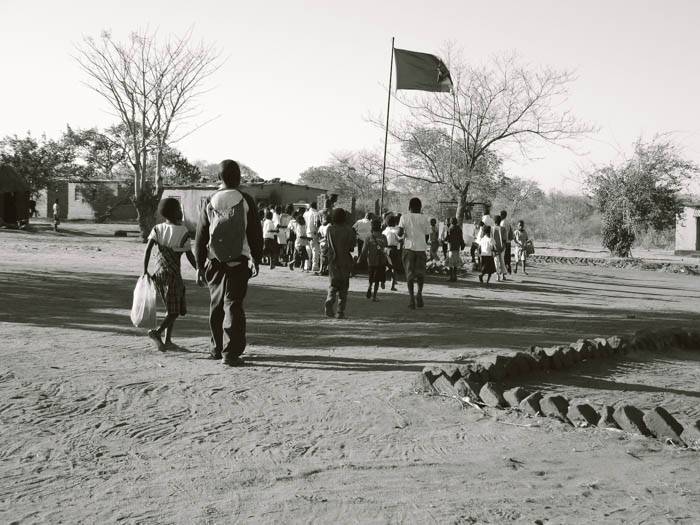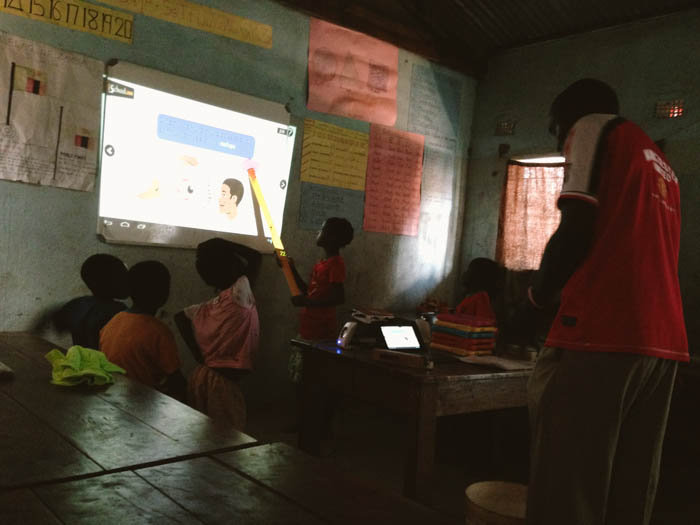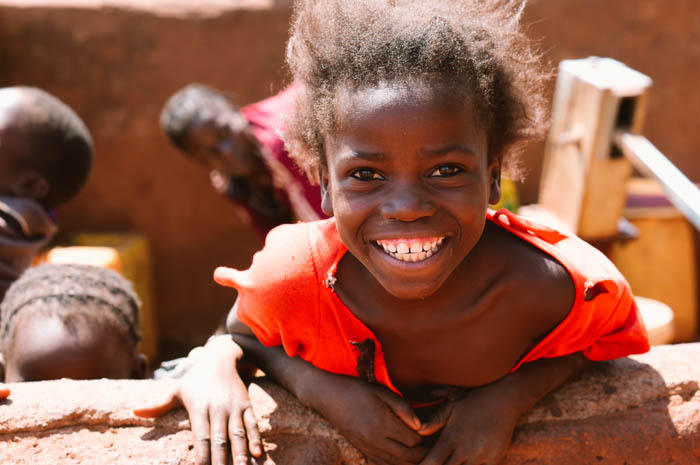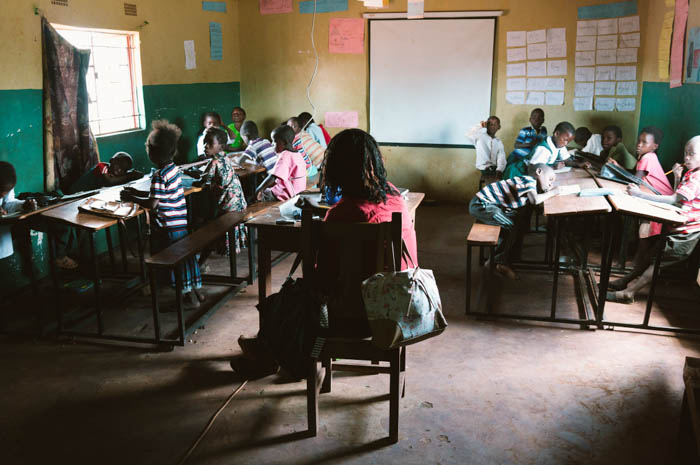Impact Network is Reinventing Education in Rural Africa
Story Highlights
Interview with Reshma Patel, Executive Director at Impact Network – From Volunteer to Executive Director
Discover the culture, people, and community in Zambia
Learn about Impact Network’s combined standardized and interactive e-Learning curriculum offered to 2000 children in Zambia
I am excited to introduce you to one our newest editorial collaborators, Reshma Patel, Executive Director at Impact Network. Reshma, on behalf of Impact Network, will launch a monthly column focusing on the “How To’s of Developing a School in Zambia” and provide examples and case studies to prove how it’s creating change for the community at large in Zambia. Also, because of my strong interest in education and the belief that every child deserves access to a quality education, my team and I felt that the insight and ideas provided might be helpful for any projects you, the reader, might be overseeing.
Reshma, who was interviewed for this article gives us an introduction to the work being done in Zambia, where they are educating 2,000 children by “delivering high-quality education with engaging, activity-based lessons through a partnership created with iSchool, a local Zambian organization.”
Reshma also speaks to what it takes to develop a school in a rural African village, how to work well with the community, and even sheds a light on the landscape in Zambia by giving us a look into the culture, people, and community there.
As you read on, and if you have a heart for education, school development, or international work, please reach out to Impact Network with your support. Lastly, special invitation below.
Q | Can you give us an overview of the culture, people, and community in Zambia?
Zambia is an incredible country – its citizens are smart, hard-working and exceptionally friendly. In 2011, President Michael Sata was elected, defeating previous President Rupiah Banda from an opposing party. The world and country braced for the potential of violence, as seen in other African nations. But President Banda graciously admitted defeat and handed over the reins, leading to a peaceful transition of power. Despite occasional turmoil, Zambia has always emerged with an unbroken peace record – it has never been engaged in conflicts within itself or with another country.
Sadly, President Sata passed away a couple of weeks ago. The country is scrambling to hold another election in January 2015 but we have faith that Zambia will continue to uphold that record.
Q | Tell us about the Impact Network mission
It’s actually really quite simple: We believe that every child deserves access to a quality education. By empowering teachers with a projector and tablet loaded with activity-based lessons, we make this possible for our 2,000 students in rural Zambia.
As part of the Millennium Development Goals, the organization actually started by building schools to bring educational access to some of the 58 million children out-of-school across the globe. But after completing the construction on several schools, we realized that while the buildings were impressive, the education that our students were getting was not.
In 2010, we shifted our focus beyond the build, to create a solution that could deliver high-quality education year in and year out, while keeping costs to a minimum. After much research, we found that the highest impact way to accomplish this is to provide a tablet and projector to classrooms, and empower teachers with creative lessons and comprehensive training. To develop engaging, activity-based lessons, a partnership was created with iSchool, a local Zambian organization.
Our solution to the education quality crisis is the eSchool 360 – our comprehensive system to sustain high-quality education year after year for less than $3 a month per student.
Q | What is your day-to-day at Impact Network?
I started at Impact Network as a volunteer – I actually visited the schools for the first time on my honeymoon! Over the years, I became more and more involved, and eventually took over early in 2013 as Executive Director.
The role breaks down into 3 main things (actually, it breaks down into about a gazillion but for simplicity’s sake!):
- Working with our team in Zambia. I travel to Zambia about three times a year, and our team there is incredibly inspiring and dedicated. I get to talk to teachers, students, parents, community members, and I have the opportunity to see everyone in action! When I’m not physically in Zambia, we receive daily emails, reports and phone calls from our team in Zambia.
- We are able to run our schools at a cost of only $3 per student per month, so the fundraising lift is not enormous. We’re coming up to our annual gala, Chefs for Impact, where the bulk of our fundraising takes place.
- Everything else. Bookkeeping, networking, talking, writing. In the NY office we have a very small team – a part-time employee and me, often working with interns. We try and make sure to hire the vast majority of our staff within Zambia, but it means that our team over here is lean and mean.
Q | Tell us about your community schools – how many students, grade levels, what do the students study, and what does a school day look like?
We currently have ten community schools and cover around 2,000 students in the Eastern Province of Zambia, for grades 1 through 4. The students study 6 main subject areas – Listening and Speaking, Reading, Writing, Science, Math, Creative and Technology Studies, and Social Development.
Students arrive at school very early – for a 7am start, they start lining up at around 6am! When they arrive, the teacher does typical things like take attendance, and students get books and pencils out. Teachers teach about 4 subject areas a day, using the standard lesson plans that iSchool provides, and half of those lessons engage with the technology in other ways too.
For example, a teacher may start the class with general questions on a certain topic – like asking students about how they sort commonly found items. After a short discussion, the teacher uses the tablet and projector to project a short animated story about a character going to a market and what they found there. From there, the fun begins! The class splits up into three groups: one focused on doing a different sorting activity on the tablets, one sorting objects commonly found in the classroom, and one doing exercises from the board. They rotate groups, and the lesson ends with the class coming back to discuss what they learned. The lessons are really designed to move away from so much of the rote learning that we see in classrooms around the globe, and to engage students in creative ways.
Q | What are the core objectives from the combined standardized and interactive e-Learning curriculum you use to improve student, parent and teacher engagement?
In terms of students and parents, you have to know that these are extremely rural areas – there’s no running water and limited electricity (with the exception of what is provided by the solar on our schools). So for many community members, this is the first real interaction they have had with technology, and they are incredibly excited about it.
What’s more exciting to us though, is the tools we are providing for our teachers. We hire local staff, providing crucial job creation in these areas, but our teachers are not formally trained. We provide them with two main things to help them succeed: 1) the proper tools; and 2) the proper training. The tools we provide are all of the lesson plans and lessons that are pre-loaded on the tablets. It’s an incredible resource for teachers that are still learning how to teach well. In terms of training – we have Teacher Supervisors that provide weekly training, feedback, and observations to help teachers improve and learn best practices. At the end of each month or term, we also do a larger group training with all of our teachers.
The objective here is really for us to provide the best quality education we can, while keeping costs relatively low. Technology combined with targeted and frequent professional development is the best way to do this.
Q | What obstacles have you come across when managing community schools in the rural villages in Zambia?
There are a lot of challenges, but I’m going to give you an example that best exemplifies one of the challenges we face. On a recent trip to Zambia, the school was on break, which is usually the time where staff focus on maintenance work at the school and replenishing supplies. I arrived at a school where a bunch of benches were stacked in the corner not being used. I asked Daniel, our Regional Director, what was happening here, and here’s a replay of the conversation as I remember it:
Reshma: Why are all these benches stacked like this and not being used?
Daniel: Well, unfortunately, they are broken, and we need to get bolts to fix them.
Reshma: OK, well we are going to Katete [a town, about 15 miles from the school], we can pick up the bolts then.
Daniel: No no, we checked there already, and they aren’t available.
Reshma: OK, maybe we can try Chipata [a town about 70 miles from the school]?
Daniel: No, they don’t have the size we need in the shops in Chipata as well.
Reshma: So where do we get them?
Daniel: Malawi [a neighboring COUNTRY].
Reshma: Oh.
Even the simplest of tasks can take time and hit roadblocks.
Q | For others in this space, what advice do you have for them both personally and professionally?
My personal and professional advice is quite similar and boils down to three main things:
- Try getting things wrong. We try a ton of different ideas and programs every year. Some of the best parts of our eSchool 360 model are things we researched, piloted, and then rolled out to all of our schools. More important than those successes though, are the things we got wrong, and the lessons we learned from that. Don’t be afraid of failure – be afraid of failing to learn lessons when things don’t go as planned.
- Be patient. I mean this both on a macro-level and a micro-level. In the day-to-day, tasks get derailed, and can take much longer than you anticipate for good reasons. But in the long run, also remember that we are tackling challenging issues in a challenging environment. Things will not change overnight. Have high expectations, but also be realistic.
- Remember the work. Every Sunday, I write a newsletter to our staff, board members, and friends of the organizations, highlighting a story in the news, and how it relates to our broader mission. It’s my way of reminding myself and others about why we are in this space. Especially when I’m not in Zambia and can’t see our students, teachers and staff – it’s a good reminder and keeps me grounded in the work we are doing.
Q | What’s next for Impact Network?
In the short-term we have our big Chefs for Impact gala. This is our fourth time doing this event – we gather some of the best and brightest chefs from around NYC together to create a multi-course tasting menu. It’s being held on Thursday November 20th at Studio 450 also featuring a cocktail reception, music, and silent and live auctions with one-of-a-kind items.
We have some big things in the works for 2015 that we’ll be announcing at our annual event. But we are going to be launching some great pilots in 2015 and opening our doors at two schools designed to serve students from grade 5 to 7 as well.
SPECIAL INVITATION
Support Impact Network in New York at their annual Chefs for Impact event on 11/20/2014
Learn. Connect. Act.
Learn more about Impact Network
Connect via Facebook, Twitter, and Instagram
From the Editor
At Conscious, we are inspired by remarkable people, and so we set out to tell stories that highlight real human interactions and human dignity. You can read more stories like this when you pick up your copy of Conscious Magazine. Subscribe today via our Conscious Shop and subscribe to Conscious Updates.
Images: Impact Network










